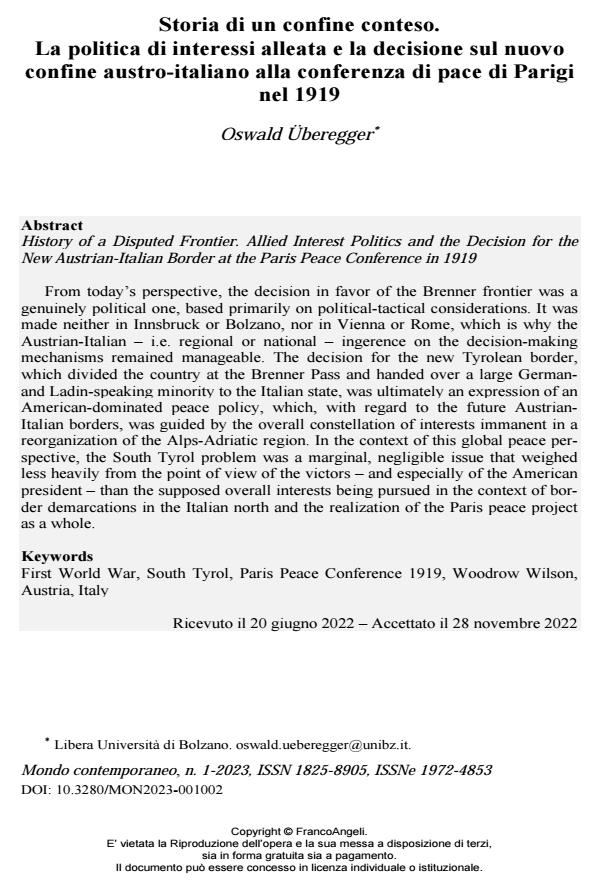History of a Disputed Frontier. Allied Interest Politics and the Decision for the New Austrian-Italian Border at the Paris Peace Conference in 1919
Journal title MONDO CONTEMPORANEO
Author/s Oswald Überegger
Publishing Year 2023 Issue 2023/1
Language Italian Pages 23 P. 31-53 File size 232 KB
DOI 10.3280/MON2023-001002
DOI is like a bar code for intellectual property: to have more infomation
click here
Below, you can see the article first page
If you want to buy this article in PDF format, you can do it, following the instructions to buy download credits

FrancoAngeli is member of Publishers International Linking Association, Inc (PILA), a not-for-profit association which run the CrossRef service enabling links to and from online scholarly content.
From today’s perspective, the decision in favor of the Brenner frontier was a genuinely political one, based primarily on political-tactical considerations. It was made neither in Innsbruck or Bolzano, nor in Vienna or Rome, which is why the Austrian-Italian ‒ i.e. regional or national ‒ ingerence on the decision-making mechanisms remained manageable. The decision for the new Tyrolean border, which divided the country at the Brenner Pass and handed over a large German- and Ladin-speaking minority to the Italian state, was ultimately an expression of an American-dominated peace policy, which, with regard to the future Austrian-Italian borders, was guided by the overall constellation of interests immanent in a reorganization of the Alps-Adriatic region. In the context of this global peace per-spective, the South Tyrol problem was a marginal, negligible issue that weighed less heavily from the point of view of the victors ‒ and especially of the American president ‒ than the supposed overall interests being pursued in the context of bor-der demarcations in the Italian north and the realization of the Paris peace project as a whole.
Keywords: First World War, South Tyrol, Paris Peace Conference 1919, Woodrow Wilson, Austria, Italy
Oswald Überegger, Storia di un confine conteso. La politica di interessi alleata e la decisione sul nuovo confine austro-italiano alla conferenza di pace di Parigi nel 1919 in "MONDO CONTEMPORANEO" 1/2023, pp 31-53, DOI: 10.3280/MON2023-001002